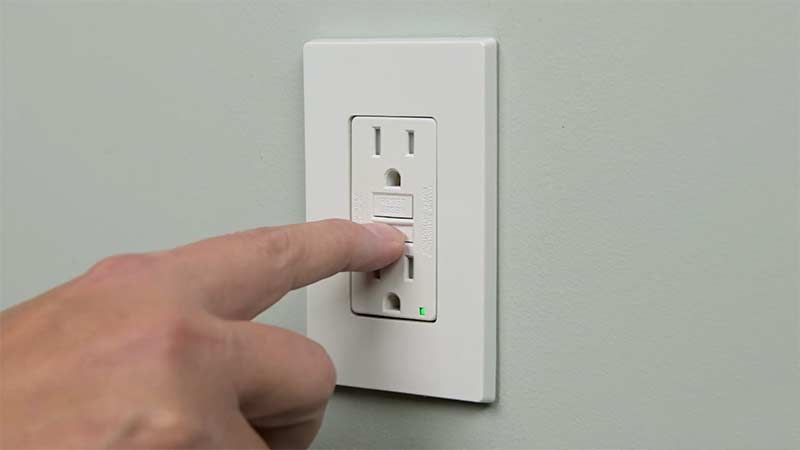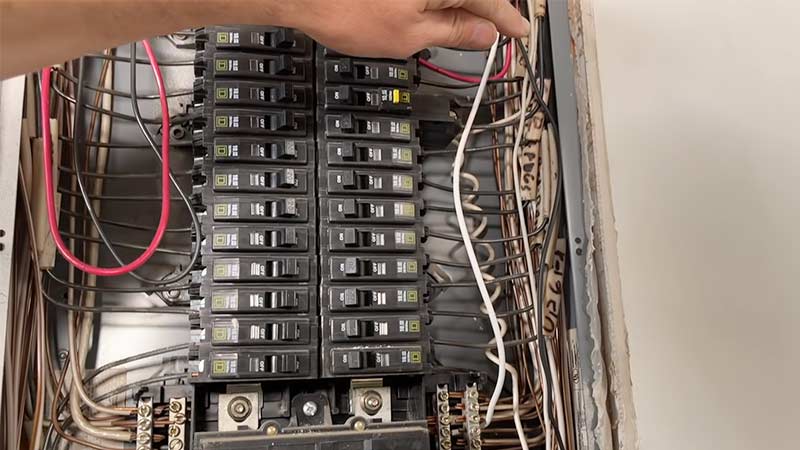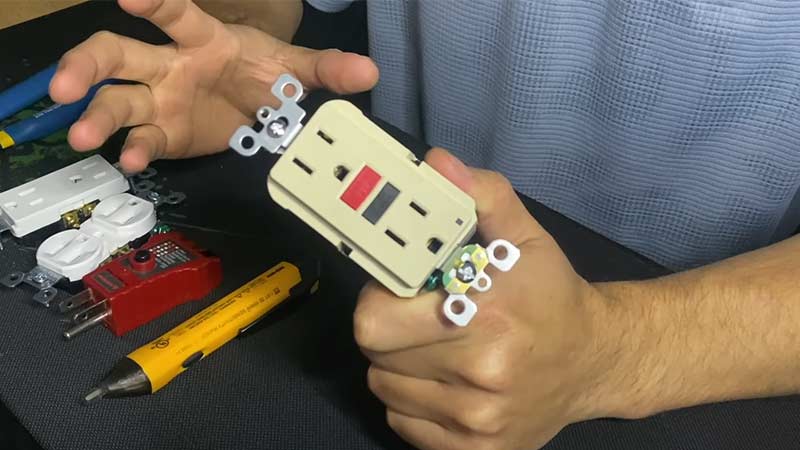If your GFCI (Ground Fault Circuit Interrupter) outlet keeps tripping when you plug something in, there could be several reasons for this issue.
It is most likely that your GFCI outlet is tripping because of ground faults, moisture in the receptacle box, overloaded circuits, electrical faults, and a faulty outlet.
In this article, we will discuss each of these issues, as well as their causes and solutions. The ground-fault circuit interrupter is designed to protect you from electrical hazards.
Trips, or circuit interrupters, reduce the risk of fire or electrocution by interrupting electrical circuits. You’ll need to hire an electrician if they trip, as that indicates there is a problem.
If there is an imbalance in the current coming in through the hot and out of the neutral, a GFCI will trip.
Diagnosing GFCI Outlet That Keeps Tripping When Your Plug Something In
It appears you have a neutral-to-ground fault (neutral wire touching ground) on the LOAD side of your GFCI, as it trips whenever something is plugged into a LOAD-side outlet, but not when it is plugged into the GFCI itself.
Here’s how I’d diagnose your issue:
- Remove the LINE and LOAD from the GFCI by pressing the “Reset” button.
- You need to turn off the electricity in that circuit.
- The outlet should be removed approximately halfway down the chain on the LOAD side.
- Using a multimeter, test for continuity between the ground and neutral screws (for example, using the OHM setting).
- It is normal for ground and neutral to be connected at the main panel, but since the GFCI (hopefully) disconnected the neutral, a properly-wired circuit should not have continuity.
- You will find continuity if my guess is correct, which confirms a neutral-to-ground fault. Check the box for loose wires. Re-splice any broken connections you find.
- In the box, unsplice the neutral and ground wires. Again, check the ground and neutral screws for continuity. The outlet is defective if there is continuity.
- Inspect the neutral/ground wires for continuity. You should repeat the process for the incoming neutral/ground wires, if any.
- You can repeat steps above to narrow down the fault location if there is continuity on one side of the circuit.
- There may be a problem between two outlets in the wall, which can easily be fixed by running a new wire between them.
- You won’t be able to complete the above within an hour; it will probably take you a day. Not knowing how the outlets are connected will make the job take longer.
Hire a licensed electrician if you’re not comfortable doing any of this.
What Causes Ground-Fault Circuit Interrupter To Trip?

A faulty GFCI outlet is the most common cause of GFCI tripping. Other causes include ground-faults, moisture in receptacle boxes, overloaded circuits, and electrical faults.
We will take a closer look at each of these issues, including their causes and solutions.
Electrical Fault
There is a possibility that a faulty structural wiring could be causing your GFCI outlet to trip consistently.
Your home’s wiring could also be the problem if you have an outlet connected to the same circuit that was not originally installed.
The problem of an electrical fault must be fixed by a professional electrician.
Ground-Fault Occurrence
An appliance with a grounded area or a ground fault occurs when a hot wire or live wire contacts a ground wire.
It is usually the GFCI that detects when current is flowing along an unintended path (for instance, through water).
GFCIs trip instantly when they detect even the slightest current leakage of even 0.005 amps.
Is the current leaking? How can you tell? Switch off all switches on that circuit and unplug everything.
Ensure that the equipment does not show any signs of wear. In case of even the slightest damage, the electrical part no longer protects itself from contact.
Overloaded Circuit

When an electric wire or circuit receives more current than it can handle, it is considered to be overloaded. You may experience this if you connect a malfunctioning or defective appliance.
The problem may also be caused by loose or corroded connections or wires. The GFCI outlet trips or breaks the circuit once it detects an overload. Follow these steps in order to determine whether overloading is the problem.
- The circuit in question should be unplugged of all appliances.
- Reset the fuse box circuit.
- Wait for a few minutes.
- Plug the appliance back in and turn it on.
- Make sure your circuit hasn’t tripped.
- Next, plug in the next appliance and turn it on, then check the breaker, etc.
- If the problem persists, you may need to replace the items causing it.
- It is possible that a new circuit and outlet, able to handle the appliances’ amperage requirements, need to be installed if the problem continues to occur.
Moisture In The Receptacle Box
Another major cause of GFCI tripping is moisture accumulation. The most vulnerable GFCI outlets are those located outdoors, and rain is a major culprit.
High humidity in Florida, for example, can also cause moisture buildup and make it harder for water trapped in receptacles to evaporate.
Inspect the receptacle box to begin your search. Open the receptacle box after turning off the breaker.
You must wait until the box is dry before attempting to reset the GFCI. Blow dryers can be used to speed up the drying process, but professionals should be consulted for this part.
Make sure the box is weatherproof and locked even when the receiver is in use, especially if the installation is outdoors or in areas with high humidity. An accidental electric shock can occur when there is moisture present.
Dust Or Debris
GFCIs can become clogged with dust and debris, disrupting electricity flow.
By disrupting the flow of detritus, you prevent fire hazards and prevent appliances from getting damaged. Use a soft-bristled brush to remove dust before resetting the outlet.
Worn Or Damaged Wires
Rubber insulation on your home’s wires can be damaged by rodents chewing on the walls or by regular wear and tear.
A GFCI outlet may prevent the unprotected wire from overheating and causing a fire behind the wall or a flood of energy from damaging the appliance on the other end.
An outlet cover that feels warm to touch or smells like burning plastic can indicate damaged wires. Call a trusted electrician to repair the wiring if you suspect this is causing your GFCI to trip.
Faulty GFCI Outlet
In the event that you have tried everything else, but the GFCI outlet reset does not resolve the issue, the outlet itself is probably defective.
When a fault occurs in the electricity system, GFCI outlets have highly responsive internal circuitry.
A worn-out circuitry causes the outlet to become dysfunctional over time. An electrician should be contacted in this case to repair or replace the outlet.
How To Reset And Test A Tripped GFCI: Step By Step
GFCI outlets can be tested to determine if they are defective or have a ground fault once the outlet is dust and moisture-free.
- Take all appliances off the circuit and unplug them.
- Reset the GFCI by pressing the button in the middle.
- Plug each device in and turn it on one by one. GFCI switches trip for two reasons: either there is a ground fault caused by the last appliance you plugged in, or that the circuit is overloaded with devices.
- Make sure all the devices are unplugged and the outlet is reset.
- Only reconnect the last device. Circuits that trip with only one machine need to be repaired or replaced if they have a ground fault.
Final Words
If your GFCI outlets continue to trip after troubleshooting, you may need more specialized assistance.







